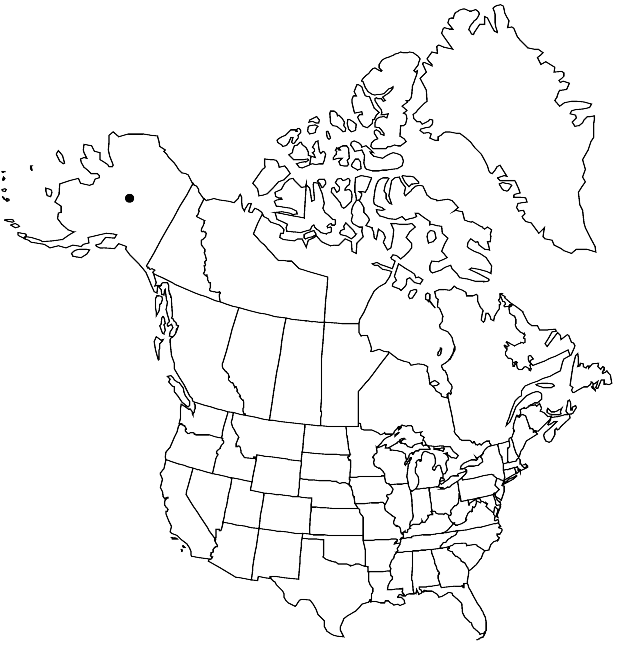Smelowskia pyriformis
Rhodora 54: 108, fig. 3B. 1952.
Plants sometimes canescent throughout; caudex simple. Stems: usually several, rarely simple from base, usually unbranched, rarely branched, 0.5–2.4(–3) dm, trichomes simple, to 1.3 mm, mixed with smaller, dendritic ones. Basal leaves: petiole 1–4 cm, often ciliate, trichomes simple; blade broadly ovate to oblong in outline, (terminal segments oblong to or ovate), 1–2.2 cm × 8–15 mm, (terminal segments 0.4–1 cm × 1.5–3 mm), margins pinnatifid, apex obtuse. Cauline leaves shortly petiolate or sessile; blade similar to basal, smaller distally. Racemes considerably elongated in fruit. Fruiting pedicels ascending to divaricate-ascending, (often forming less than 40˚ angle), proximalmost bracteate, 5–15(–20) mm, pubescent, trichomes simple (to 1.4 mm), mixed with smaller, dendritic ones. Flowers: sepals 1.2–2.2 mm; petals purple, lavender, or white, suborbicular to obovate, 2.5–4.5 × 1–2.5 mm, narrowed to claw, 1–2 mm, apex rounded; anthers ovate, 0.3–0.5 mm. Fruits ascending, pyriform, subterete, 5–9 × 2.5–4 mm, base cuneate, apex rounded; valves each with prominent midvein; ovules 4 per ovary; style 0.4–1.2 mm. Seeds (oblong-lanceolate) 2.5–3.2 × 1–1.5 mm. 2n = 12.
Phenology: Flowering Jun–Aug.
Habitat: Loose talus, scree slopes, shale ridgetops, limestone volcanic rubble, mixed sandstone-siltstone-carbonate scree
Elevation: 600-1700 m
Discussion
Of conservation concern.
Selected References
None.

